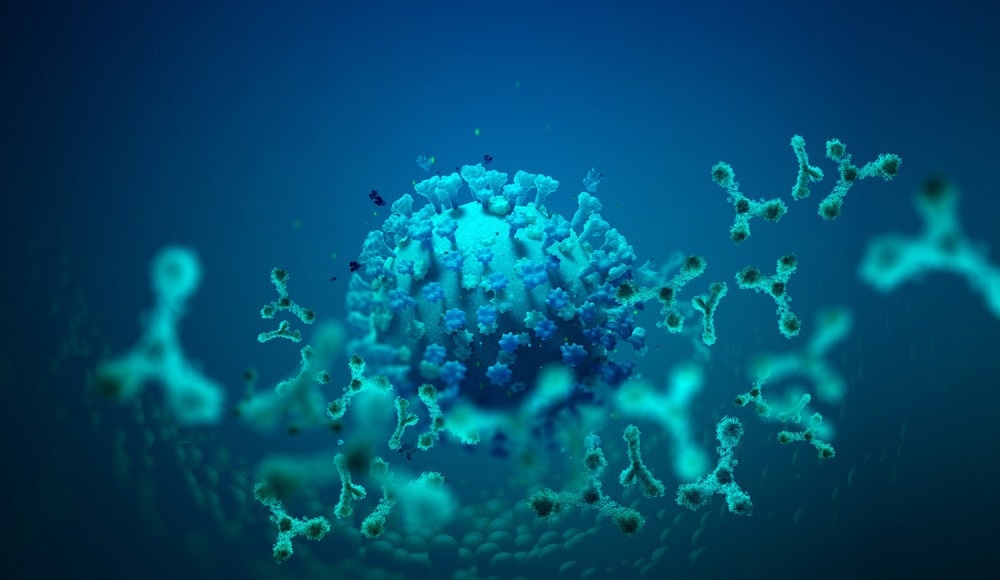In a recent study posted to the medRxiv* preprint server, researchers determined the prevalence of antibodies against the severe acute respiratory syndrome coronavirus 2 (SARS-CoV-2) spike (S) glycoprotein following three or more doses of coronavirus disease 2019 (COVID-19) vaccines among immunocompromised individuals.
 Study: Antibody prevalence after 3 or more COVID-19 vaccine doses in 23,000 immunosuppressed individuals: a cross-sectional study from MELODY. Image Credit: Yurchanka Siarhei/Shutterstock
Study: Antibody prevalence after 3 or more COVID-19 vaccine doses in 23,000 immunosuppressed individuals: a cross-sectional study from MELODY. Image Credit: Yurchanka Siarhei/Shutterstock

 *Important notice: medRxiv publishes preliminary scientific reports that are not peer-reviewed and, therefore, should not be regarded as conclusive, guide clinical practice/health-related behavior, or treated as established information.
*Important notice: medRxiv publishes preliminary scientific reports that are not peer-reviewed and, therefore, should not be regarded as conclusive, guide clinical practice/health-related behavior, or treated as established information.
Background
Studies have reported poorer COVID-19 outcomes among immunosuppressed individuals than the general public, despite vaccine administration. Solid organ transplant (SOT) recipients, individuals with lymphoid malignancies (LM), and those on immunosuppressive medications are reportedly at an elevated risk of hospitalizations and deaths associated with COVID-19.
Evaluation of humoral responses to vaccination among immunosuppressed individuals could improve risk stratification and prioritization and facilitate the provision of the highest standard of care to such patients. Rapid point-of-care tests, with results correlating with COVID-19 severity outcome risks, are required to enhance COVID-19 management. Additionally, anti-SARS-CoV-2 antibody testing could quickly identify persons most likely to benefit from COVID-19 interventions.
About the study
In the present prospective cohort study, researchers evaluated vaccine-induced humoral immune protection against SARS-CoV-2 among immunocompromised adult individuals. They investigated whether mass-scale serological antibody level assessments using lateral flow immunoassays (LFIA), coupled with the self-documentation of individual factors, could assess humoral responses and establish factors increasing the risk of poor humoral responses following ≥3.0 COVID-19 vaccinations.
Individuals were recruited between 7 December 2021, and 26 June 2022, at home, using data from the comprehensive national United Kingdom (UK) national registers: the national disease registration service (NDRS) registry to identify English individuals suffering from rare autoimmune rheumatic diseases (RAIRD) or LM; and the national health service (NHS) blood and transplant (NHSBT) registry for SOT recipients. In addition, LM patient data was obtained from the national cancer registration dataset of 2019 and the rapid cancer registration datasets of 2020 or 2021.
Participants received at-home LFIA tests for measuring anti-S immunoglobulin G (IgG) antibody titers and web-based questionnaires to obtain data on sociodemographic variables, COVID-19 vaccination status, prior COVID-19 history, and clinical diagnosis and management of the immunosuppressive condition. The second questionnaire was distributed to obtain data on the shield history, psychological discomfort, LFIA test experience, and results.
The design of the present study was an adaptation of the REACT2 clinical trial applied to immunosuppressed individuals. Self-documented anxiety and depression were assessed using the Generalized Anxiety Disorder 7 (GAD-7) and the patient health questionnaire depression scale (PHQ-8) scores. Multivariate logistic regression modeling was performed to identify factors affecting the humoral responses, and the odds ratios (OR) were calculated.
Results
In total, 101,972 individuals were invited, among which 28,411 were recruited for the analysis. Among the individuals, 23,036 provided serological testing data, comprising 6,593 individuals with LM, 6,516 individuals with RAIRD, and 9,927 solid organ transplant recipients. Individuals had been administered 3.0, 4.9, or ≥5.0 COVID-19 vaccinations at the time of SARS-CoV-2 testing among 29%, 62%, and 10%, respectively. At-home LFIA tests detected positive humoral responses among 77% (n=7,617) of SOT recipients, 86% (n=5,594) of RAIRD patients, and 79% (n-5,227) of LM patients.
Anti-S IgG could not be detected among 23%, 14%, and 21% of SOT recipients, RAIRD patients, and LM patients, respectively. Among all individuals, positive anti-S IgG titers were detected among younger individuals, with an increasingly high number of vaccinations and prior COVID-19 history. Immunocompromising medications lowered the seropositivity probability; the least anti-S IgG titers were observed among SOT recipients receiving steroids, calcineurin inhibitors (CNIs), and anti-proliferative medications simultaneously.
Among SOT recipients, liver transplant recipients showed the greatest likelihood of developing humoral immune responses (OR 1.3), and pulmonary transplant recipients showed the least likelihood (OR 0.6) compared to renal transplant recipients. In the RAIRD cohort, individuals with SVV showed the least likely to generate seropositivity (OR 0.7) regardless of other variables. Among LM patients, individuals with indolent and aggressive B-NHL showed a lower likelihood of seropositivity than Hodgkin lymphoma patients (OR values of 0.6 and 0.5, respectively).
Contrastingly, individuals having plasma cell tumors were more likely to develop seropositivity than Hodgkin lymphoma patients (OR 3.2). Amongst antitumor therapies, individuals treated with anti-cluster of differentiation-20 (CD-20) showed the least likelihood of developing seropositivity (OR 0.1), followed by Bruton tyrosine kinase inhibitors (BTKi), chemotherapy, radiotherapy, autologous stem cell transplantation (ASCT), and thalidomide-lie drugs, with OR values of 0.2, 0.1, 0.2, 0.3, and 0.3, respectively. Moderate to severe psychological discomfort was reported by 12%, 17%, and 7.0% of SOT recipients, RAIRD cohort, and LM cohort, respectively.
Conclusion
The study findings showed that one in five SOT recipients, RAIRD, and LM patients did not develop anti-S IgG titers despite ≥3.0 vaccines. However, the percentage decreased with booster dose administration. The type of SARS-CoV-2 infection and immunosuppressant prescribed showed strong associations with the serological humoral responses.

 *Important notice: medRxiv publishes preliminary scientific reports that are not peer-reviewed and, therefore, should not be regarded as conclusive, guide clinical practice/health-related behavior, or treated as established information.
*Important notice: medRxiv publishes preliminary scientific reports that are not peer-reviewed and, therefore, should not be regarded as conclusive, guide clinical practice/health-related behavior, or treated as established information.